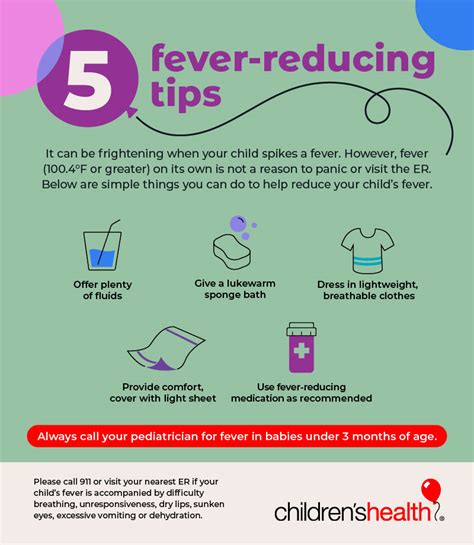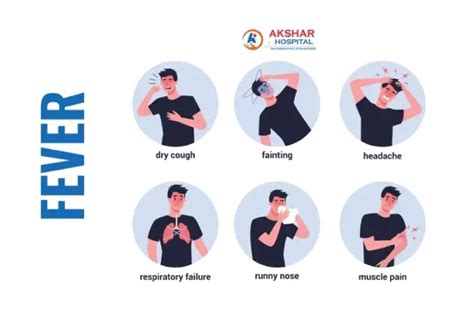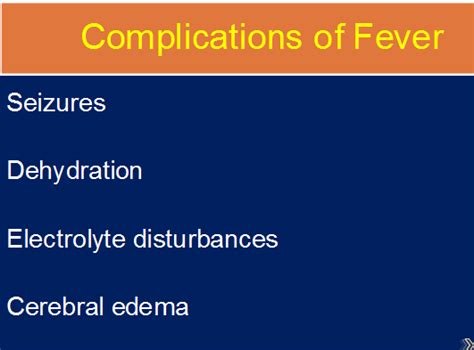Intro
Is 104 fever bad? Learn about high fever symptoms, causes, and treatments, including when to seek medical help for severe fever conditions, fever reduction, and body temperature regulation.
Having a fever can be a concerning and uncomfortable experience, especially when it reaches a high temperature like 104 degrees Fahrenheit. Fevers are a natural response of the body's immune system to infection or inflammation, and they can be caused by a variety of factors, including viral or bacterial infections, heat exhaustion, or certain medications. In this article, we will explore the implications of having a 104 fever, its potential causes, and the steps you can take to manage and treat it.
A fever is generally considered to be a temperature above 98.6 degrees Fahrenheit, and it can range from mild to severe. While a low-grade fever may not be a cause for concern, a high fever like 104 degrees can be a sign of a more serious underlying condition. It's essential to monitor your temperature closely and seek medical attention if you experience any severe symptoms, such as difficulty breathing, chest pain, or confusion.
Understanding Fevers

Causes of Fevers
There are many potential causes of fevers, and some of the most common include: * Viral infections, such as the flu or common cold * Bacterial infections, such as pneumonia or urinary tract infections * Heat exhaustion or heat stroke * Certain medications, such as antibiotics or antihistamines * Inflammatory conditions, such as arthritis or appendicitis It's essential to identify the underlying cause of a fever to provide effective treatment and prevent potential complications.Managing a 104 Fever

When to Seek Medical Attention
While most fevers can be managed at home with rest, hydration, and over-the-counter medications, there are certain situations where it's essential to seek medical attention. Some of the signs that you should seek medical attention include: * A fever that exceeds 103 degrees Fahrenheit * Difficulty breathing or shortness of breath * Chest pain or pressure * Confusion or disorientation * Severe headache or stiff neck * Vomiting or diarrhea that lasts for more than two days * Signs of dehydration, such as excessive thirst or dark urineTreatment Options for Fevers

Preventing Fevers
While it's not always possible to prevent fevers, there are several steps you can take to reduce your risk of developing a fever. Some of the most effective ways to prevent fevers include: * Practicing good hygiene, such as washing your hands frequently and avoiding close contact with people who are sick * Getting vaccinated against common illnesses, such as the flu or pneumonia * Avoiding overheating by staying in a cool, well-ventilated environment * Staying hydrated by drinking plenty of fluids * Getting enough rest and avoiding strenuous activitiesComplications of Fevers

Long-Term Effects of Fevers
While most fevers are acute and resolve on their own, there can be long-term effects if the underlying cause is not addressed or if the fever is severe. Some of the potential long-term effects of fevers include: * Chronic fatigue or weakness * Cognitive impairment or memory loss * Emotional or psychological trauma * Increased risk of future illnesses or infections * Permanent damage to organs or tissuesConclusion and Next Steps

Final Thoughts
Fevers are a natural response of the body's immune system, and they can be a sign of a more serious underlying condition. By being aware of the potential causes, symptoms, and treatment options for fevers, you can take control of your health and reduce your risk of developing a fever. Remember to stay hydrated, practice good hygiene, and seek medical attention if you experience any severe symptoms.What is a normal body temperature?
+A normal body temperature is typically considered to be around 98.6 degrees Fahrenheit, although it can vary slightly from person to person.
What are the most common causes of fevers?
+The most common causes of fevers include viral infections, bacterial infections, heat exhaustion, and certain medications.
How can I manage a fever at home?
+You can manage a fever at home by staying hydrated, resting, and taking over-the-counter medications to reduce fever and relieve pain.
When should I seek medical attention for a fever?
+You should seek medical attention if you experience any severe symptoms, such as difficulty breathing, chest pain, or confusion, or if your fever exceeds 103 degrees Fahrenheit.
Can fevers be prevented?
+While it's not always possible to prevent fevers, you can reduce your risk by practicing good hygiene, getting vaccinated, and staying hydrated.
